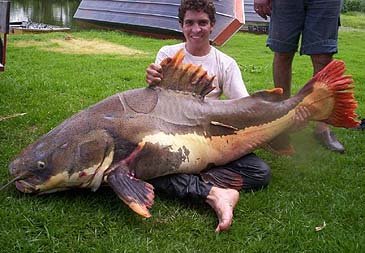What's the argument here? lol
The largest RTC ever caught by hook & line in the wild, was smaller than this specimen raised in captivity in a zoo.

 largest.org
largest.org
The world’s largest redtail catfish was captured in 2010 by Gilberto Fernandes in Brazil’s Amazon River. Fernandes’ redtail catfish was 123 pounds 7 ounces (56 kilograms) and 4.62 feet (1.408 meters) long. There really isn’t any more details about Fernandes’ catch, but he did use a fiberglass Sportex rod to land the redtail catfish.
According to a news report, Fernandes has over 100 IGFA world fishing records. Just a month before he made his record redtail catfish catch, Fernandes caught another redtail that was 113 pounds 8 ounces (51.5 kilograms).
Are their larger WC specimens that have been documented? I would love to see them.
The largest RTC ever caught by hook & line in the wild, was smaller than this specimen raised in captivity in a zoo.

7 Largest Catfish Ever Caught - Largest.org
Overall, catfish are some of the most abundant species of fish in the world. According to Practical Fishkeeping, there are ... Read more
The world’s largest redtail catfish was captured in 2010 by Gilberto Fernandes in Brazil’s Amazon River. Fernandes’ redtail catfish was 123 pounds 7 ounces (56 kilograms) and 4.62 feet (1.408 meters) long. There really isn’t any more details about Fernandes’ catch, but he did use a fiberglass Sportex rod to land the redtail catfish.
According to a news report, Fernandes has over 100 IGFA world fishing records. Just a month before he made his record redtail catfish catch, Fernandes caught another redtail that was 113 pounds 8 ounces (51.5 kilograms).
Are their larger WC specimens that have been documented? I would love to see them.



